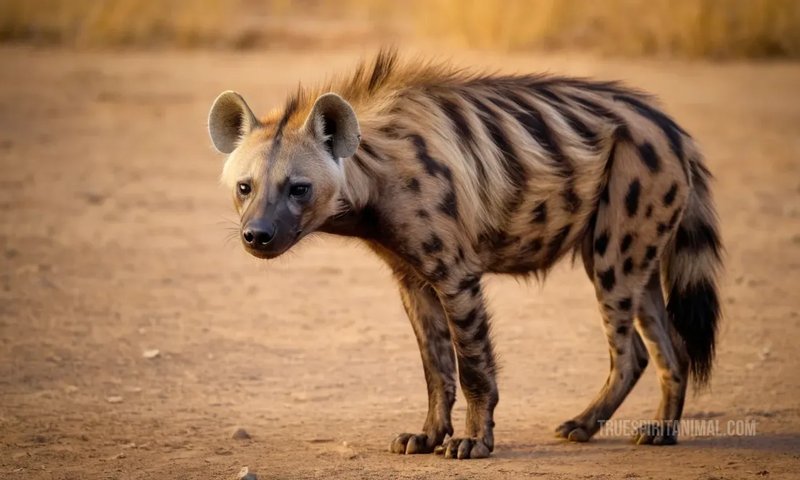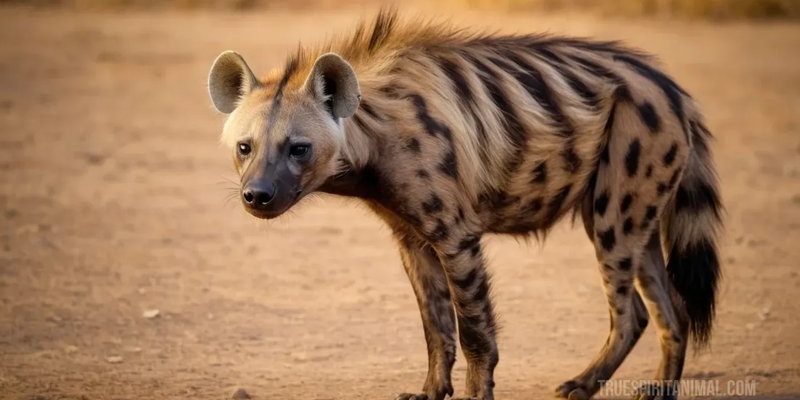
The striped hyena, with its long legs and distinctive stripes, is more than just a scavenger; it’s a creature draped in myths and stories. Across various cultures, from the Middle East to parts of Africa, this animal has found its way into legends, proverbs, and even art. Honestly, it’s a bit like a quirky cousin at a family gathering—often overlooked, but full of surprises and interesting tales just waiting to be discovered. Let’s delve deeper into how the striped hyena has been represented in culture and folklore.
The Striped Hyena in Folklore
Folklore is a treasure trove of tales, and the striped hyena is no exception. In many cultures, this animal is woven into the fabric of stories that often highlight its cunning nature. For instance, in Middle Eastern folklore, the striped hyena is frequently depicted as a trickster—a character that embodies both wisdom and folly. This duality makes it relatable: we all have moments where we outsmart ourselves, right?
In some stories, the striped hyena is seen as a scavenger that teaches lessons about resourcefulness and survival. In contrast, in other tales, it takes on the role of a creature that brings misfortune. It’s intriguing how one animal can symbolize both resilience and danger, much like how life can throw unexpected challenges our way. These stories reflect the complexities of the human experience, showing that the striped hyena is more than just a mere animal; it’s a symbol of life’s paradoxes.
Symbolism and Meaning
The symbolism of the striped hyena varies across cultures, often reflecting the values and beliefs of the people who tell the stories. In many African traditions, the striped hyena represents cunning and adaptability. It’s a reminder that sometimes the most unassuming creatures can possess great strength and intelligence. For instance, there are tales where the hyena outsmarts larger predators, emphasizing how wit can triumph over brute force.
Conversely, in some cultures, the striped hyena is associated with death and decay. This connection arises from its scavenging habits, leading to negative perceptions. Here’s the thing: this duality in symbolism shows how cultural contexts can shape our understanding of animals. We often project our fears and hopes onto them, reflecting our own struggles and triumphs.
Art and Literature
The striped hyena has also made its mark in art and literature, inspiring various works that explore its character and behavior. In ancient Egyptian art, for example, you might find depictions of hyenas alongside other animals, representing their importance in the ecosystem. These visual representations often highlight the beauty and uniqueness of the striped hyena, pushing back against the common stereotype of hyenas as merely scavengers.
In modern literature, authors have drawn on the striped hyena’s traits to create vivid characters that captivate readers. Think about how stories often personify animals to teach moral lessons. The striped hyena might wander into stories as a clever character that teaches us about the value of intelligence, much like Aesop’s fables. Such narratives invite us to reflect on our qualities—how being clever can sometimes be more beneficial than sheer strength.
Hyenas in Folklore and Popular Culture
Beyond traditional folklore, hyenas, including the striped variant, have found their way into popular culture. For instance, in films and television, they often appear as mischievous or villainous characters, reinforcing stereotypes that may not fully capture their true essence. But here’s the thing: these portrayals can mask the reality of their intelligence and social structure.
Despite being shown as the “bad guy,” there’s a growing movement to reframe how hyenas are depicted. Documentaries and wildlife programs highlight their complex social structures and roles in the ecosystem, giving viewers a more balanced understanding. This shift helps us appreciate the striped hyena not just as a character in a story, but as a vital part of our world’s biodiversity.
Proverbs and Sayings
If you want to see how deeply the striped hyena has embedded itself into various cultures, look no further than proverbs and sayings. In parts of Africa, there are expressions that involve the hyena, often invoking themes of cleverness or caution. For example, a saying might warn against being outsmarted by someone who appears less capable. These words carry weight and wisdom, reminding us of the lessons that can be learned from nature and its creatures.
Such sayings reflect a communal understanding of the striped hyena’s traits, illustrating how societies absorb lessons from the animal kingdom. It’s a reminder of how interconnected we are with the world around us and how our tales can help shape our values and behavior.
Conservation and Cultural Importance
As we appreciate the cultural significance of the striped hyena, it’s crucial to recognize the conservation status of this unique animal. Habitat loss and human-wildlife conflict pose significant threats to their survival. Many cultures that once revered the striped hyena now face the risk of losing it altogether. This situation highlights a pressing issue: the need for conservation efforts that not only protect the hyena but also honor its cultural significance.
Conservation programs that involve local communities can help balance cultural respect and animal preservation. When people understand the importance of the striped hyena in their folklore and ecology, they are more likely to protect it. Here’s the silver lining: by combining cultural appreciation with conservation efforts, we can ensure that the stories of the striped hyena continue to be told for generations to come.
The striped hyena is a fascinating creature that embodies a blend of symbolism, storytelling, and cultural significance. From its representations in folklore to its roles in modern narratives, it holds a unique place in the hearts and minds of various cultures. By understanding how the striped hyena is represented across different contexts, we can appreciate not just the animal itself but also the lessons it imparts about resilience, cunning, and the complexities of life.
As we navigate our modern world, let’s remember the important stories that the striped hyena brings with it. Not only does it encourage us to think critically about our perceptions of nature, but it also teaches us about the deep connections we share with the animal kingdom. Wouldn’t it be amazing if, through our actions and respect for wildlife, we could ensure that the tales of the striped hyena continue to thrive in both folklore and reality?

